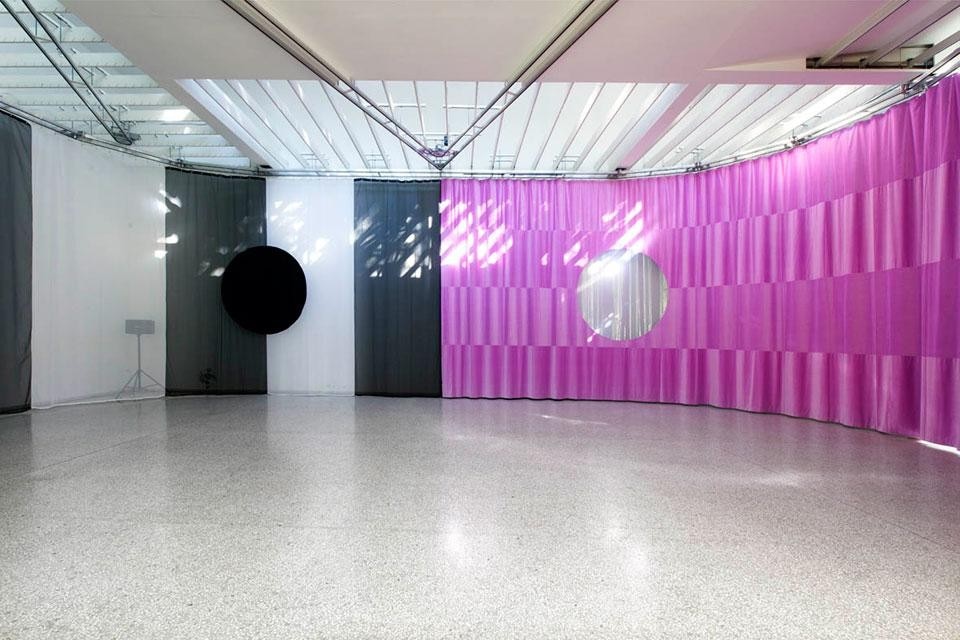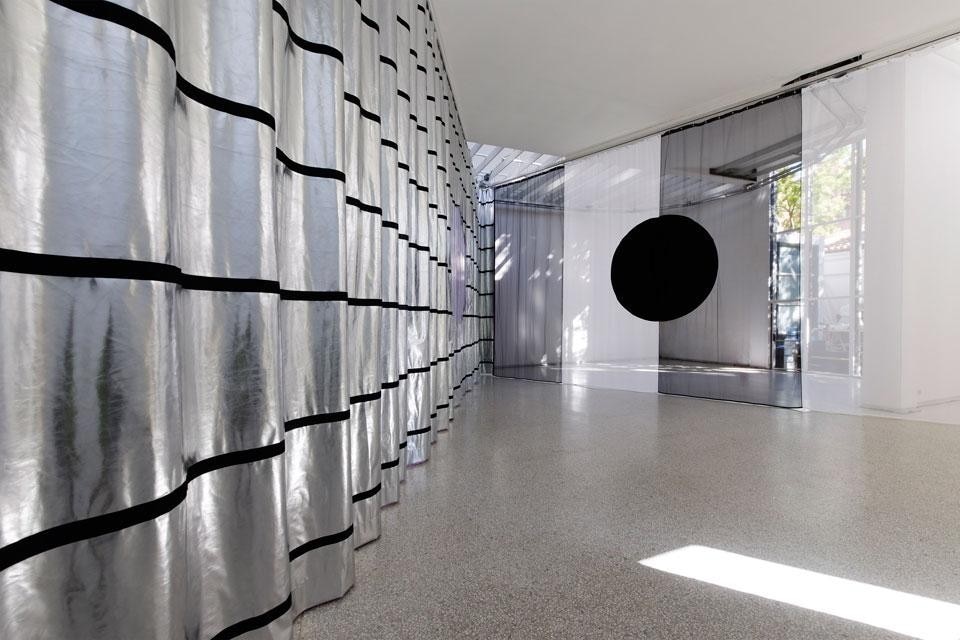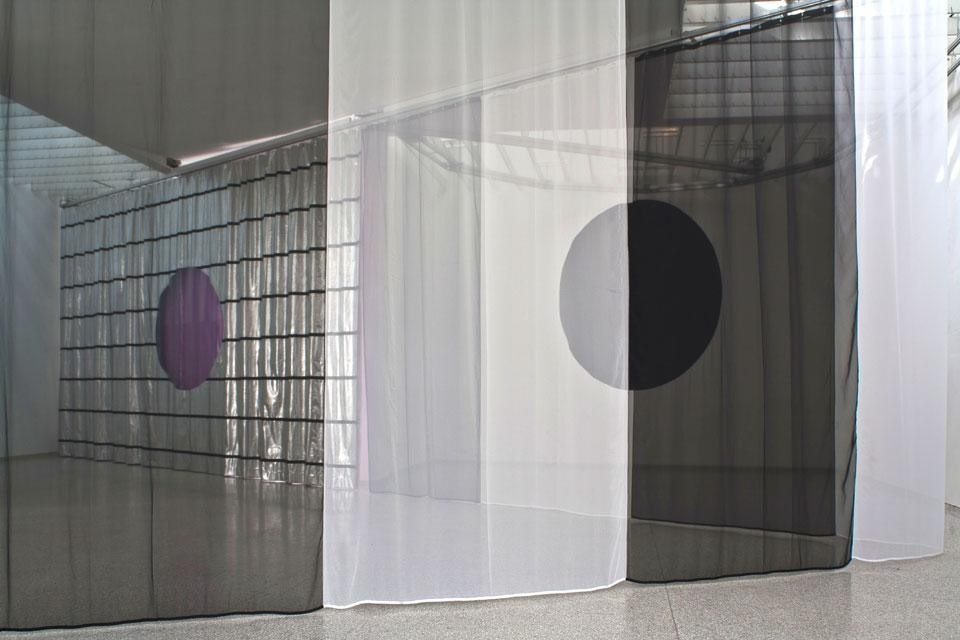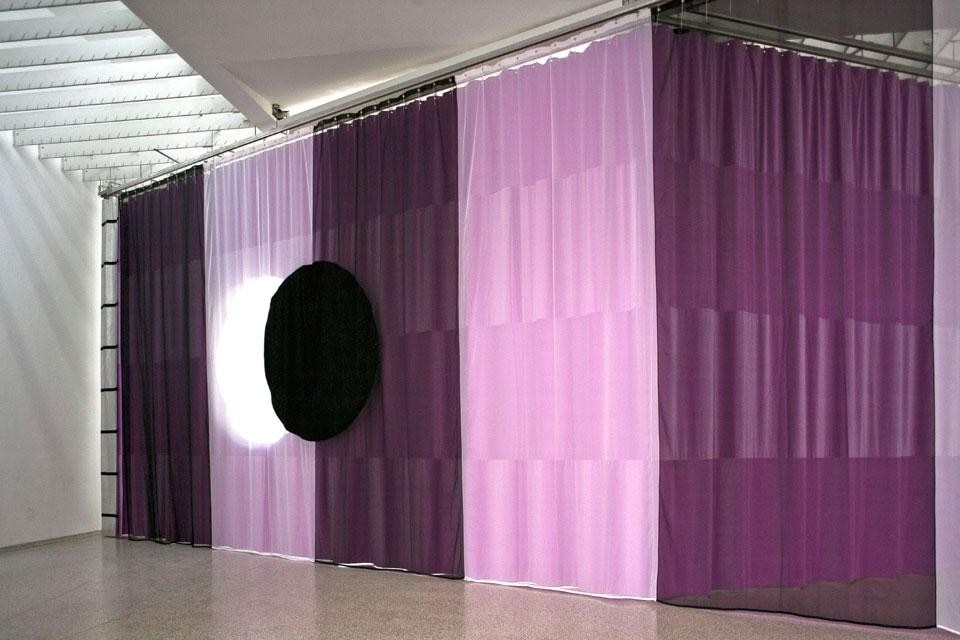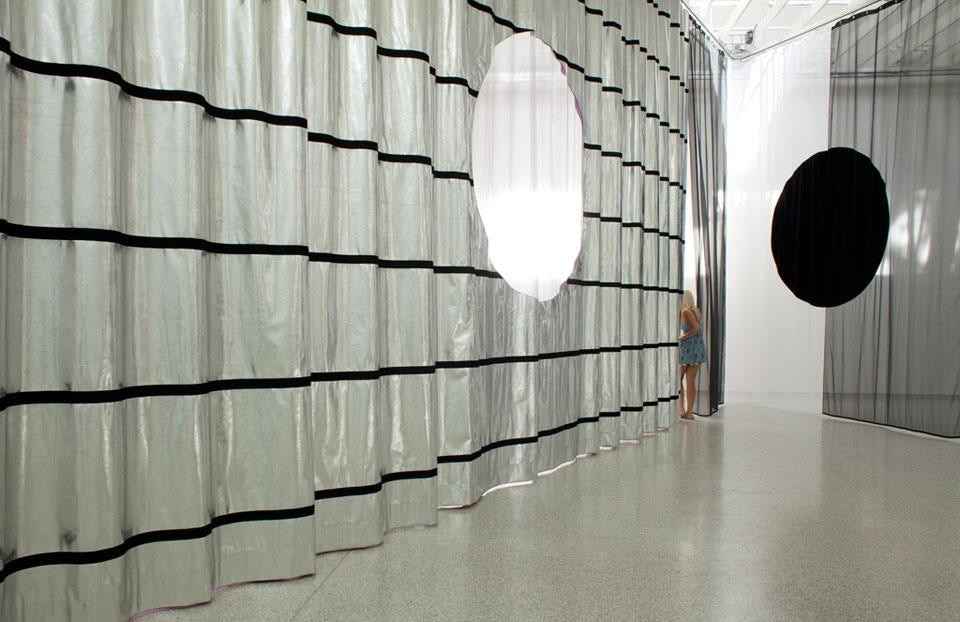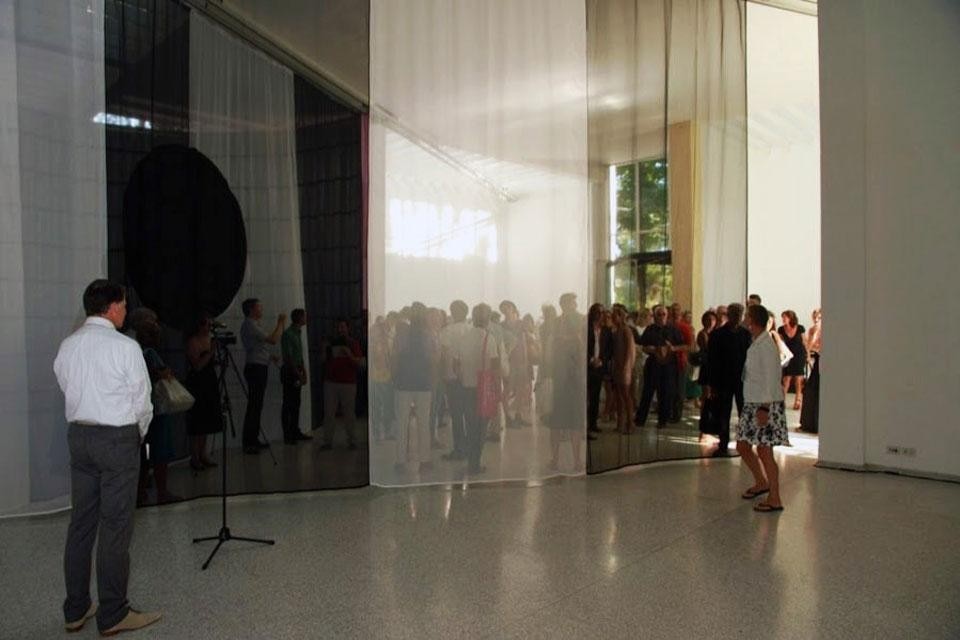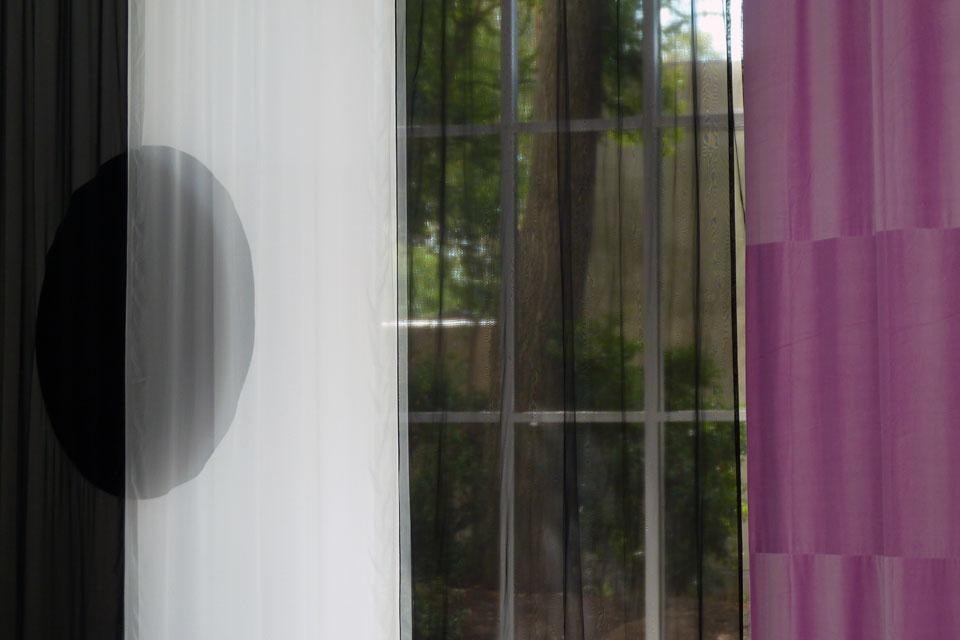The installation, designed by Petra Blaisse of Inside Outside and curated by Ole Bouman, director of NAi, appears very simple: two full-height fabric curtains glide slowly through the interior of the historic building designed by Gerrit Rietveld and take it over. Their movement is steered by tracks fixed to the ceiling, governed by a timer that is programmed to alternate movement and pause 12 times for 96 seconds. It takes time to fully grasp the essence of the work. Blaisse says: "We enhance the time phenomena because the curtain movement is about time; because the light coming into the pavilion is also about time; as the installation shifts during the day, the shadows and light patches on the walls, curtains and floor change position with the sun. We put mirrors on the roof to catch the sun in the opposite direction: the reflections go from west to east and the sun shifts from east to west whereas the curtains move through the space in twelve positions — like the twelve hours of the day and night."
Time and space are the joint protagonists of the project and is physically and perceptively changed by the twelve configurations of the fabric curtains. Bouman argues: "This pavilion, an incredible exhibition space, was built 54 years ago and is only used for three months a year, during the Biennale. We wanted show that architecture can still play a decisive role in reanimating and reviving this vacant building. Petra Blaisse has managed to create many new ground plans: pure architecture."
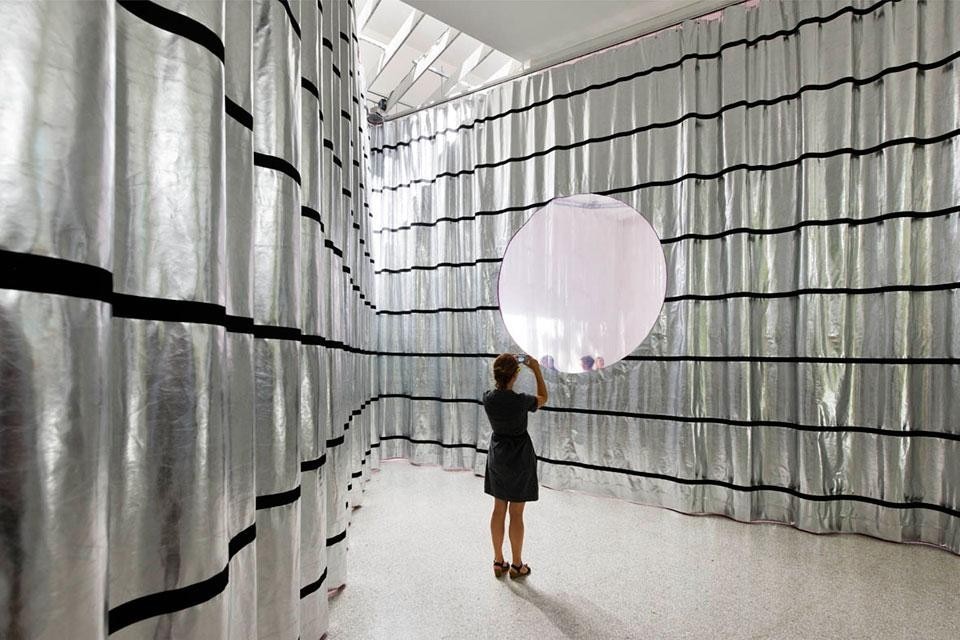
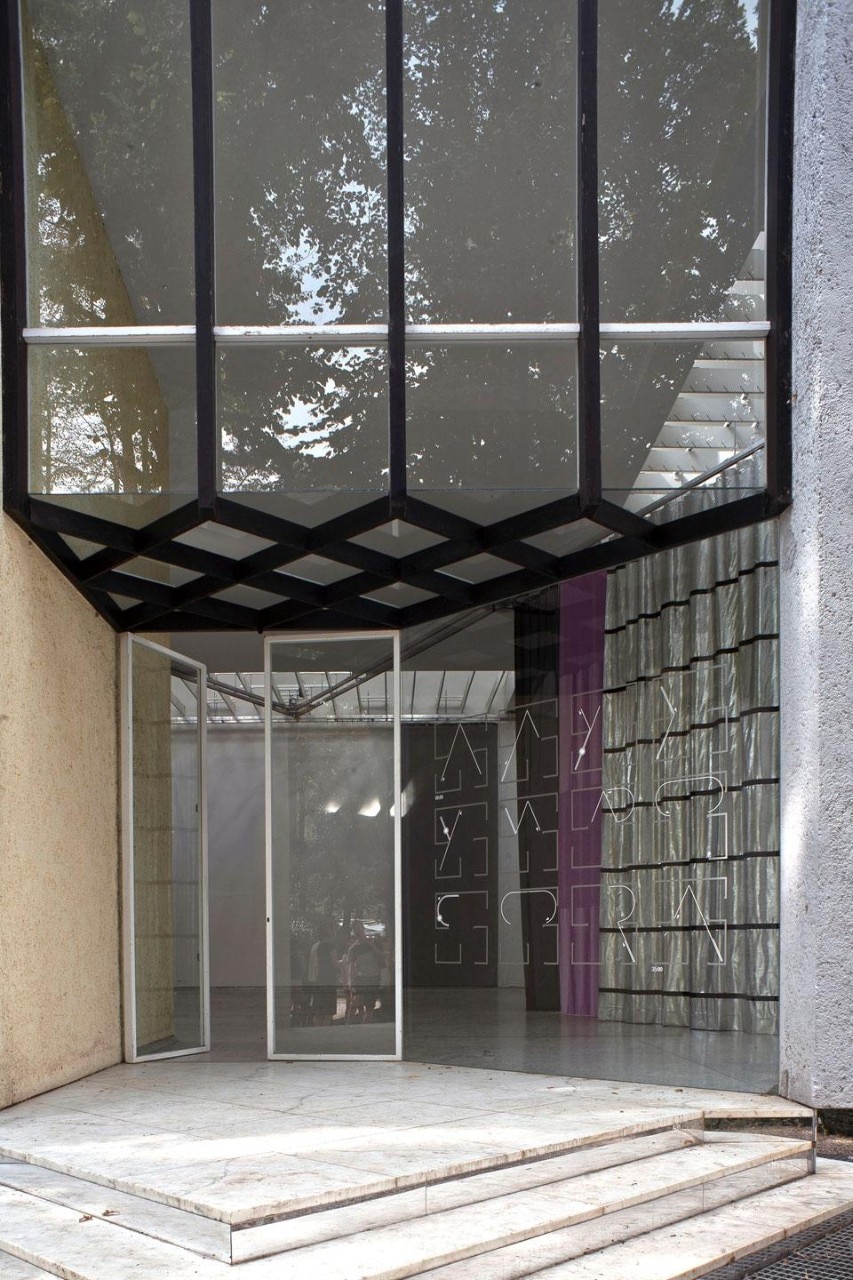
Time and space are the joint protagonists of the project and is physically and perceptively changed by the twelve configurations of the fabric curtains
